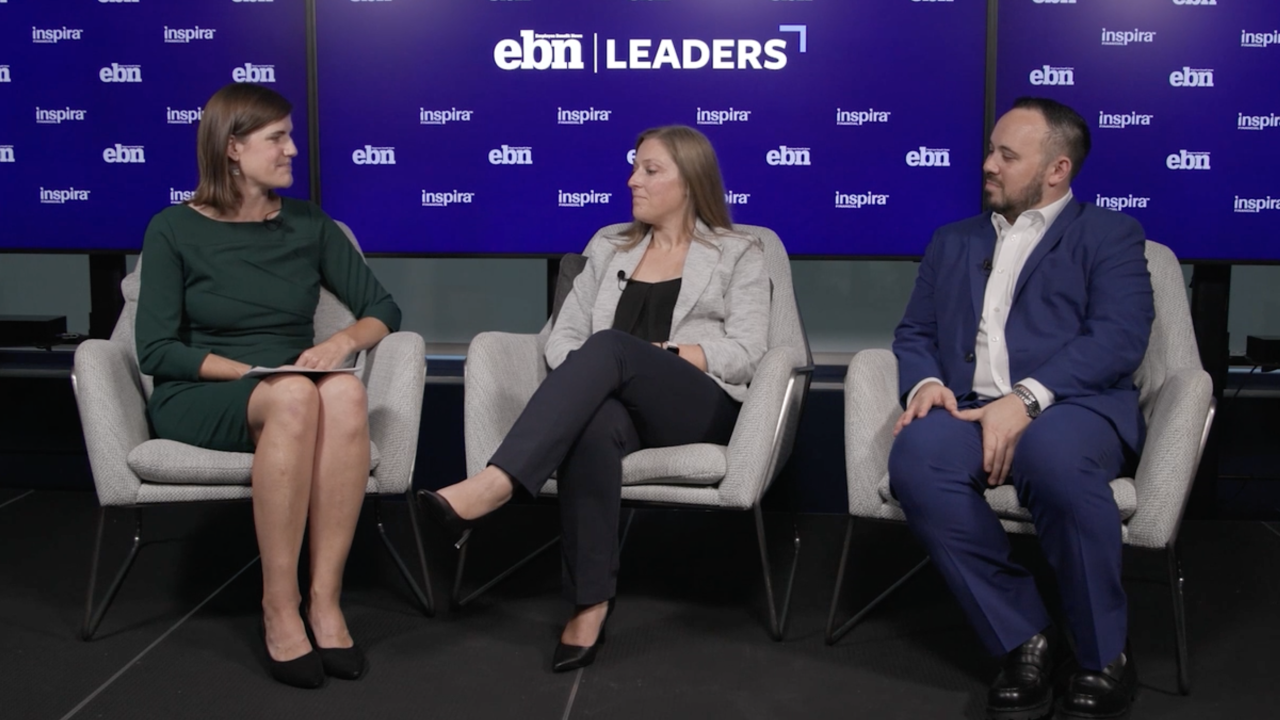Benefit offerings are one of the most important tools for retaining and recruiting employees—but what happens when workers don’t utilize the offerings available? And is the plethora of available resources truly improving a workforce’s health and wellbeing?
For answers, Employee Benefit News spoke to Brian Marcotte, president and CEO at National Business Group on Health, and Mike Thompson, president and CEO of the National Alliance of Healthcare Purchaser Coalitions. The two industry experts sounded off on the challenges benefits managers face when it comes to employee engagement — and the solutions they see going forward.
What follows is an edited version of the discussion.
Employee Benefit News: What’s top of mind for employers right now when it comes to their benefits and health strategy?
Brian Marcotte: What keeps employers up at night — and has for the past few years — is engagement. It’s engagement in all these benefits and transparency tools, telehealth, wellbeing programs — the full scope of resources that employers make available. How do they make these available at the time employees need them, and how do they maximize them and achieve their goals from a health and wellbeing perspective? Engagement is their No. 1 challenge; they offer great resources, but it’s a matter of getting employees to use them at a time when they need them.

EBN: Why do you think it’s been such a big battle?
Mike Thompson: I think what’s happened over the past decade and more has been a focus on putting the employee in the middle, making them the center of these decisions. I don’t think it’s working the way it’s intended. The complexity people have to deal with is greater. A lot of this [in terms of solution] is taking all this complexity and simplifying it. The days of having a whole array of vendors without organizing it and having a strong cord engagement strategy are behind us. The approach where one vendor leads the way and guides employees to all the other sources available to them is probably the direction we need to move forward with.
EBN: So you think it’s a matter of improving employees’ experience with how they view and use their benefits?
Marcotte: There’s such an increased focus on the employee experience right now. That’s been a gradual change over time. A lot of the reason for low engagement is out of sight, out of mind. Employees don’t touch the health system with enough frequency to think about the resources available to them. You could have stumbled through your career 20 years ago without paying attention to retirement planning or any of those things, and come out of the other side with defined benefit pension plan, money in your 401(k), retiree medical benefits. That’s not the case today. The focus is much more on the experience and engagement. There are a lot of point solutions that have emerged, and employers are getting overwhelmed by them. There’s a point solution fatigue, and if mobile is not a part of your communication strategy today, then your communication strategy is not complete. There’s a crying need in the market for solutions that can aggregate these point solutions, leverage big data and technology and push communication — especially mobile — to employees in real time when they need them.
EBN: Are these efforts — such as emerging point solutions — paying off in terms of engaging employees? Are employers making progress in that area?
Marcotte: On point solutions, we are seeing an uptick in engagement as a result of getting people involved. We have anecdotal evidence that point solutions are driving engagement.
Thompson: I think we are making marginal progress, but not as much major progress as I think we would like to expect. We haven’t largely moved the health of our employees in many ways. We continue to be less healthy over time. Making marginal impact is important, but it’s not clear we are winning that war. There’s a broader focus we need — moving to a wellbeing agenda that’s tied into employee experience. Here I think we’re seeing significant change in the mindset of employers in how they are offering benefits, why they’re offering benefits and the breadth of benefits that they offer.
EBN: How do you improve those results, and improve the health of employees?
Marcotte: Employers are taking a broader view of health and wellbeing. Workforce strategy is becoming new healthcare strategy. Employers are trying to help people stay healthy—thinking about this is important for workforce strategy, not just healthcare. It’s important we elevate the thinking on how I invest in wellbeing as much as I invest in training development safety.
Thompson: I agree. That mindset changes the way you approach problems. If you’re starting with healthcare costs as your bottom line, you often will go down one path. But when you’re starting with the wellbeing of your workforce as maybe the primary objective — yes, we need to mitigate the costs of the programs and have a return on investment, but there’s no more important investment in the people of our organization. That leads to a different mindset on how we approach initiatives.
EBN: How can employers shift to that mindset?
Marcotte: It’s not something that has to be driven by the benefits department; it has to be embraced by the organization. So you need to go up in the organization to come back down and drive it. You need C-suite support.





